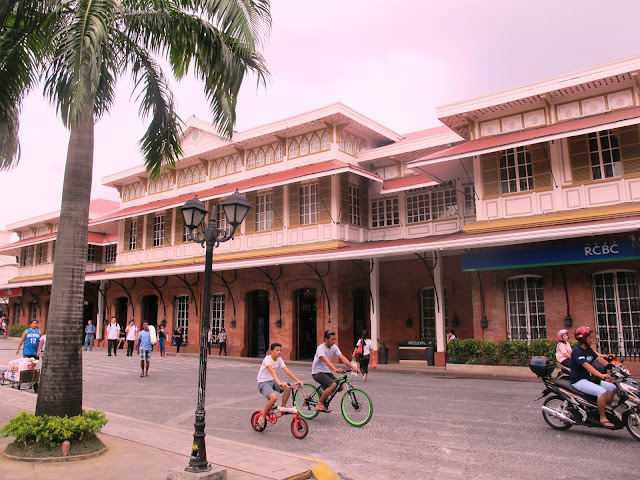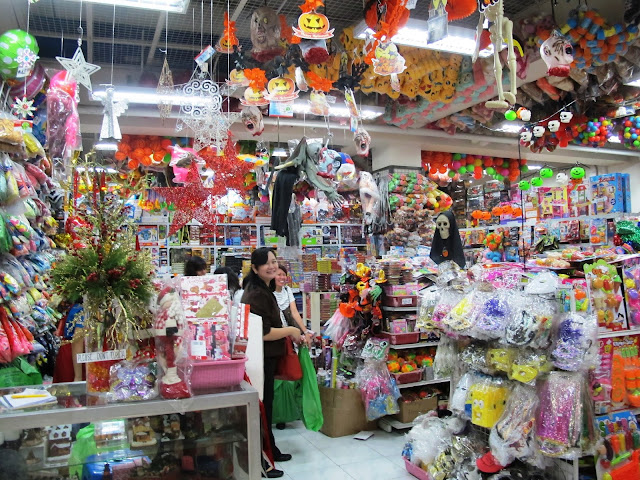Chinese food is not a usual option for a Christmas feast. There are no special dishes reserved for such celebration, China being largely non-Christian and thus having no Christmas traditions. But with the proliferation of Chinese restaurants around the world, many of them have been catering to Christian Chinese, as well as other nationalities celebrating one of the world’s biggest occasions. One of them is Singapore-based Crystal Jade, which has branches in several countries including the Philippines.
Crystal Jade’s branch at the Bonifacio High Street in Taguig City has prepared special menus for the Filipinos’ most beloved celebration, including regular items prepared in a “Christmas-y way” and new dishes specially concocted for the occasion.
Take, for example, the sliced bitter gourd or ampalaya with plum sauce. Usually served arranged like a flower, it is now served arranged like a Christmas tree with pieces of cherry and mango serving as embellishment with a preserved plum (which we usually call champoy) at the top. The bitter gourd is blanched, thus preserving much of its nutrients. Its bitterness is tempered by the tart sweetness of the plum sauce, and such combination makes for an interesting dish of contrasting flavors.
Another intriguing dish of contrasting flavors and an imaginative way of serving is the new almond with scallop soup. The almond flavor in creamy broth is usually served as dessert in a form as gelatin. Now, it is as a warm, creamy soup, the saltiness replacing the sweetness. However, it is served in the shell of a ripe papaya, so you can scrape off the papaya flesh while spooning the bisque, providing hints of sweetness and freshness to each slurp. At the bottom is an indulgent surprise — a fat medallion of scallop meat.
There is also a duo of crispy duck sandwich and shredded duck fruit salad. The sandwich is actually made of slivers of vegetables and duck meat in between squares of crisp fried duck skin, which is surprisingly delectable. This is contrasted by the rich salad.
Another addition to Crystal Jade’s deluxe Christmas menu is the pan-fried bean curd roll with special sauce. It is composed of tasty meat roulades wrapped in bean curd skin and set in a pool of secret exquisite sauce, which is actually shark’s fin soup, treasured in Chinese gastronomy but controversial.
Another ingredient considered luxurious in Chinese cuisine is the fish maw, or the swim bladders of large fishes, sold dried. Crystal Jade’s fish maw with black truffle and osmanthus is actually a fried rice dish with strips of fish maw and flavored with black truffle and osmanthus flowers. Fragrant and flavorful, this harmonious ensemble of exotic ingredients is very likable.
These are currently being offered for the holiday season and are featured in Crystal Jade’s specially curated holiday full-course sets, which start at about P8,800 (with complimentary gift certificates) and includes interesting dishes such as golden baked crab shells (which we recognize as crab relleno), live garoupa served in two ways, steamed rice with seafood and abalone sauce in lotus leaf, steamed garoupa with black fungus and cordycep flowers, and yang zhou fried rice and red bean mango mouse cake.
To make your holiday feast truly delicious and indulgent, add in Crystal Jade favorites such as steamed soupy pork dumpling or xiao long bao and the steamed cream custard bun with salted egg yolk.
Crystal Jade was established in Singapore in 1991, offering an assortment of Chinese dishes prepared in luxurious and exquisite ways. Over the years, the restaurant has grown into a food and beverage company with over 100 outlets in Asia-Pacific and the United States. The first Philippine branch opened in 2010 in Greenhills, San Juan City, and then moved to its present location at 7th Avenue, Bonifacio High Street, Bonifacio Global City in Taguig City, in 2013. In July 2016, the restaurant earned its first one Michelin star. The guide inspectors particularly cited its Cantonese barbecue meats, seafood dishes, foie gras with Japanese sake and pan-fried scallop, roasted suckling pig with black truffle and the selection of wines.
For inquiries, call 808-5233 or visit www.crystaljade.com.ph.
 |
| Fish maw with black truffle and osmanthus |
 |
| Pan-fried bean curd roll with special sauce |
 |
| Sliced bitter gourd with plum sauce |























































